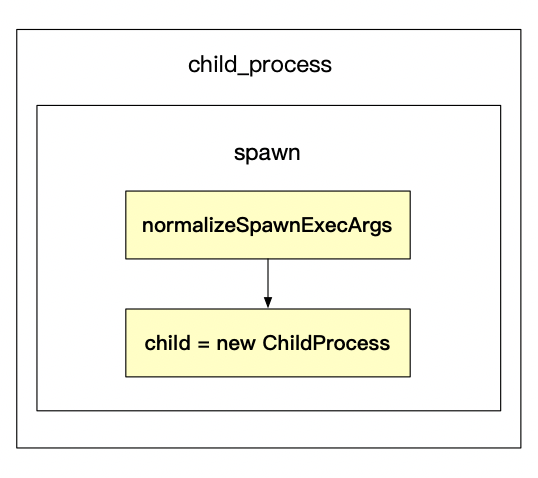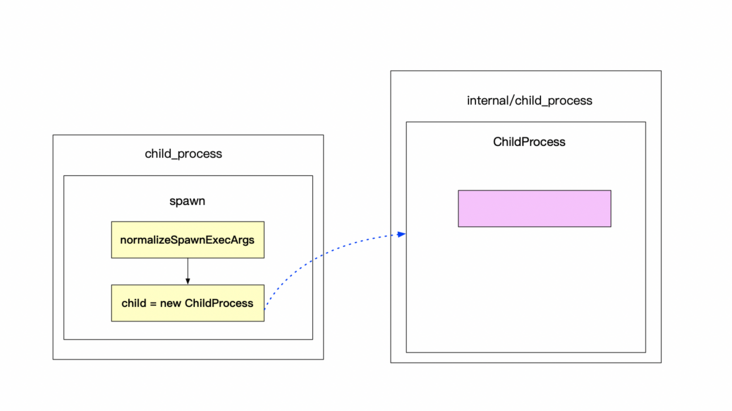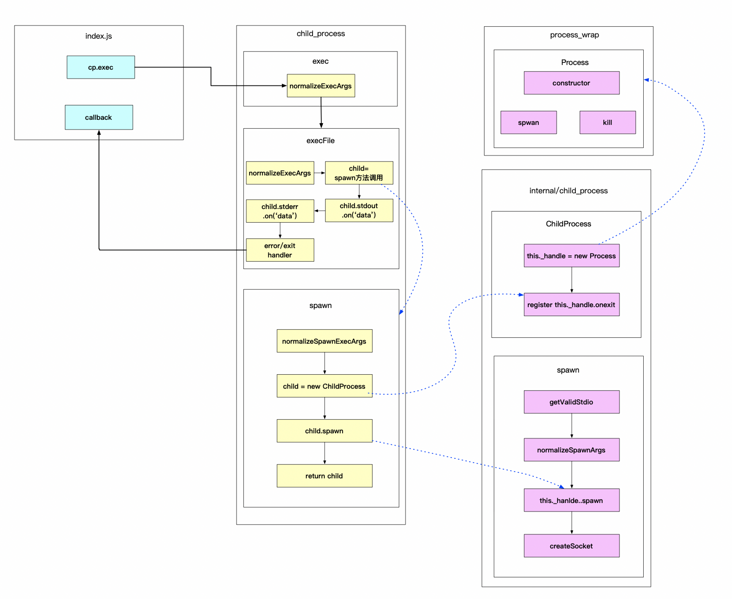作者:来杯冰柠檬水 | 来源:互联网 | 2023-09-23 20:36
Node多进程exec方法执行流程源码分析-在自研脚手架阶段,对node的同步异步执行进行了使用;但是未能深层次去了解为何这么设计,这次也是通过问题的方式来进行了一些思考。⚠️注:
在自研脚手架阶段,对node的同步/异步执行进行了使用;但是未能深层次去了解为何这么设计,这次也是通过问题的方式来进行了一些思考。
⚠️注: 目前是12版本的node;你可能现在用的版本是16版以上用TS来写的;但是node的基本上的思路是没有太多变化的。
思考
问题一:exec和execFile到底什么区别?
问题二: 为什么exec/execFile/fork都是通用spawn实现的,spawn的作用到底是什么?
问题三:为什么spawn没有回调;exec和execFile能够回调?
问题四:为什么spawn调用后,需手动调用child(spawn返回值).stdout.on('data',callback);spawn.stdout和spawn.stderr到底是什么?
问题五:为什么有data/errer/exit这么多种回调;他们的执行顺序到底是什么?
一、 源码分析
源码分析方法:根据方法的执行调用顺序来进行分析源码
exec源码分析
源码目录结构
child_process.js
internal/child_process.js
代码执行流程
执行本地代码
首先在本地创建index.js;
const cp = require('child-process');
const child = cp.exec('ls -la|grep node_modules', function(err, stdout stderr){
console.log(err, stdout, stderr);
});

执行 cp.exec方法
将会调用node的内置库【child_process】中的【exec】方法,进行参数的标准化处理【normalizeExecArgs】
function exec (command, options, callback) {
const opts = noramlizeExeArgs(command, options, callback);
return module.exports.execFile(opts.file,
opts.optionns,
opts.callback);
}
入参处理:
opts:{
file : "ls -al|grep node_modules",
options : {shell : ture},
callback : .....,
}
入参处理后的结果:
- file 是输入的命令
- options 添加了shell为true
- callback 没有变化
返回结果:
return module.exports.execFile- 直接调用execFile方法

通过exec方法中的noramilizeExecArgs方法将参数转化成execFile方法的参数一样;
进入execFile方法
a. 首先还是会进行一个参数的标准化处理【normalizeExecFileArgs】
b. 调用spawn child方法,主要目的是创建一个子进程并且对它进行异步执行
const child = spawn (file, args, {
cwd: options.cwd,
env: options.env,
gid: options.gid,
uid: options.uid,
shell: options.shell,
.....
});
spawn参数说明:
- file: "ls -al|grep node_modules",
- agrs: 没有参数,
- object:{shell: true}; 中只有shell参数显示true,需要用内部的shell脚本去执行.

调用spawn方法
a. 进行参数的标准化处理【normalizeExecFileArgs】
b. 调用 child = new ChildProcess()
function spawn(file, args, options) {
const opts = normalizeSpawnArguments(file, args, options);
const child = new ChildProcess();
// 在child,创建的子进程当中有一个_handle是实际的进程,_handle= Process{onexit:Function,...};调用的方式是需要用spwan来调用。spwan最终执行的是_handle的spwan;
};
opts返回的参数处理:
file: '/bin/sh'
//这个是shell的主命令
在本地执行下:

shell的使用
方法一: 直接执行shell文件
/bin/sh test.shell
方法二: 直接执行shell语句
/bin/sh -c "ls-al|grep node_modules"
因为传入了参数: shell = true;所以file就设置为/bin/sh;表示用shell主命令来执行。
args: ["bin/sh", "-c", "ls -al|grep node_modules"]
options: {
cwd: null,
...
shell: true,
...
}
envPairs: // 操作系统的环境变量数据

new ChildProcess
a. 来源是node的内部库【interinternal/child_process】,node的内置库才可以调用到。
b. 这个内部库中有一个ChildProcess类;对应的就是子进程类,(就是子进程);所以在spawn中new ChildProcess()就创建了一个子进程类;

child_process.js
const child_process = require('internal/child_process')
const {
...
ChildProcess,
...
} = child_process;
- interinternal/child_process库中的ChildProcess
internal/child_process.js
const {Process} = internalBinding('process_warp');
// 引入c++文件
this._handle = Process;

创建子进程之后,调用spawn方法,child.spwan;利用子进程去执行命令,执行完之后,直接返回,return child;
function spawn(file, args, options) {
const opts = normalizeSpawnArguments(file, args, options);
const child = new ChildProcess();
...
child.spawn({
file: opts.file, // "/bin/sh"
args: opts.args, // ["/bin/sh", "-c", "ls -a | grep node_modules"]
cwd: options.cwd,
...
})
return child;
child.spawn是把命令执行起来的方法,位于internal/child_process文件中,最核心的是this._handle.spawn方法,之前只是创建了进程对象,没有分配任何实际资源。调用this._handle.spawn进程就被执行起来。相应也会生成子进程ID;

spawn执行完之后,回到execFile中,进行往下执行
a. 对输出流进行监听: child.stdout.on('data')
b. 对错误流进行监听: child.stderr.on('data')
....
if (child.stdout) {
if(encoding) {
child.stdout.setEncoding(encoding);
child,stdout.on('data', function onChildStdout(chunk){
const encoding = child.stdout.readableEncoding;
...
}
}
}
...
if (child.stderr) {
if(encoding) {
child.stderr.setEncoding(encoding);
child,stdout.on('data', function onChildStderr(chunk){
const encoding = child.stderr.readableEncoding;
...
}
}
}
...
child.addListener('close', exithandler);
child.addListener('error', errorhander);
return chuild;
这也是为什么execFile可以返回callback的原因;手动做了监听;
c. 对进程进行exit和error的监听;

总结
以上是exec方法执行流程的分析,如图:
